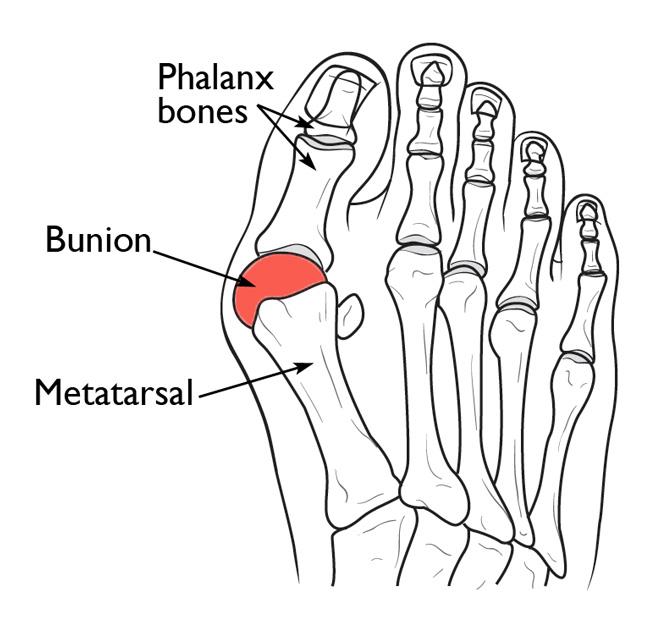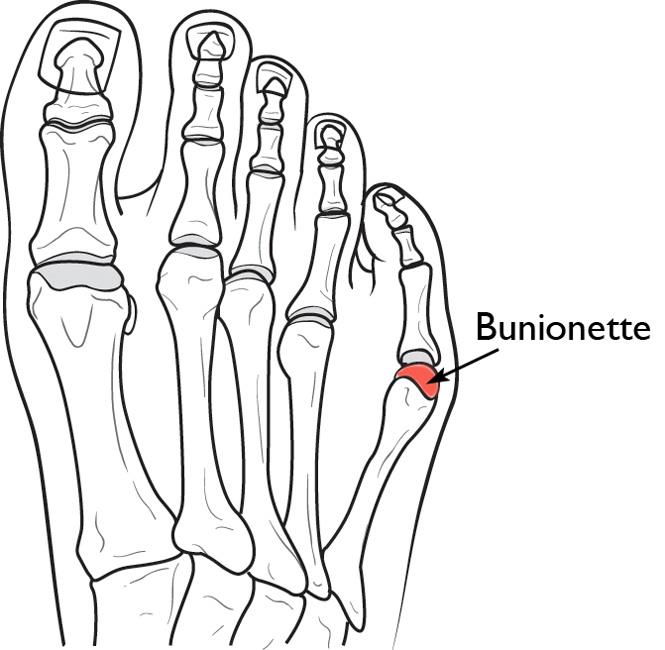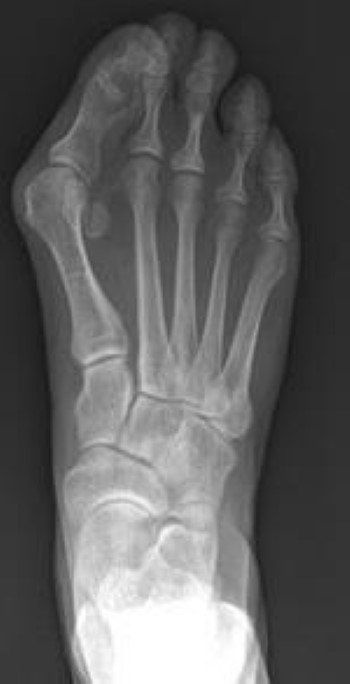Foot & Ankle
Bunions (Hallux Valgus)
Bunions are painful bumps that develop at the base of the big toe (metatarsophalangeal joint). They are caused by a structural issue in the foot, often associated with hallux valgus, a condition where the big toe drifts toward the smaller toes, causing the joint to protrude outward. This bump may form slowly and is commonly seen in individuals who have a family history of bunions. While bunions primarily affect the inside of the foot, a similar condition known as bunionettes can develop on the outside of the foot, though less frequently.
Symptoms of Bunions
Bunions are characterised by visible protrusions on the inside or outside of the foot, but they can also cause a variety of other symptoms, including:
- Pain and tenderness at the site of the bump.
- Redness and inflammation around the joint.
- Hardened skin on the bottom of the foot.
- Calluses or corns forming on the bump.
- Stiffness and restricted motion in the big toe, which may cause difficulty walking.
- Change in foot shape, leading to misalignment and altered gait.
Causes of Bunions
The primary cause of bunions is prolonged wearing of poorly fitted shoes, especially those that are tight, narrow, or have high heels. These types of footwear exert excessive pressure on the toes, leading to the gradual misalignment of the big toe and the formation of the bunion. Other factors that can contribute to bunion development include:
- Foot injuries, which can alter the alignment of bones in the foot.
- Inflammatory conditions, such as rheumatoid arthritis, or neuromuscular conditions like Charcot-Marie-Tooth or polio.
- Misalignment of bones in the feet, which can predispose individuals to bunion formation.



Diagnosis of Bunions
To diagnose a bunion, a healthcare provider will begin with a medical consultation and physical examination. The healthcare provider will inspect the feet for visible signs of a bunion and assess any pain, inflammation, or restricted motion in the toe joint. An X-ray may be recommended to evaluate the severity of the bunion, identify the underlying cause, and help plan the appropriate treatment.
Treatment Options for Bunions
Non-Operative Treatment
Bunions and bunionettes are permanent once they have formed. However, non-operative measures can help alleviate pain and prevent further development. These options are often effective in the early stages of bunion formation:
- Footwear modification: Wearing shoes that are roomier, more comfortable, and have wide toe boxes to relieve pressure on the affected area.
- Padding or protective silicone: Placing cushioning inside shoes to reduce irritation over the bunion.
- Ice packs: Applying ice to the affected area can reduce pain and swelling.
- Pain relief: Over-the-counter painkillers like paracetamol or NSAIDs (anti-inflammatory drugs), if tolerated and not contraindicated.
- Orthotics and splints: Using
orthotics, toe spacers, or night splints
to help realign the toes and reduce strain on the affected joint.
Surgical Treatment
If conservative treatments fail to provide relief, surgery may be necessary to realign the bones, ligaments, tendons, and nerves in the foot. The goal of surgery is to alleviate pain and restore the correct position of the big toe. One common surgical procedure is osteotomy, which involves cutting and realigning the bones around the big toe. Dr. du Sart prefers to perform minimally invasive (keyhole) bunion surgery for most patients, which involves smaller incisions, less post-operative pain, and faster recovery times.
Find out more about Bunion Surgery.
Why Choose Dr. Ryan du Sart for Bunion Surgery?
Dr. Ryan du Sart is a fellowship-trained orthopaedic surgeon with extensive experience in diagnosing and treating bunions and other foot conditions. Using the latest minimally invasive techniques, Dr. du Sart provides tailored care to ensure the best possible outcomes for his patients, from non-operative treatments to advanced surgical procedures.
Book a Consultation
If you are suffering from bunions or other foot conditions, it is important to seek prompt medical attention to prevent further complications. Book a consultation with Dr. Ryan du Sart today to discuss your treatment options.
Phone: (08) 9779 9767
Email: admin@ryandusart.com.au
Locations:
6 Higgins Street, South Bunbury, WA 6230
20 Prince Street, Busselton, WA 6280
References:
- Patel, P. R., et al. (2020). "Bunion Surgery: A Review of Techniques and Outcomes." Journal of Foot and Ankle Surgery, 59(4), 764-769.
- Sullivan, M., et al. (2019). "Non-Surgical Treatment of Bunion Deformities: A Comprehensive Review." Foot and Ankle Clinics, 24(3), 423-431.
- Barker, J. E., & Henning, E. A. (2018). "Minimally Invasive Bunion Surgery: A Review of Current Techniques." Journal of Orthopaedic Surgery and Research, 13(1), 1-6.

